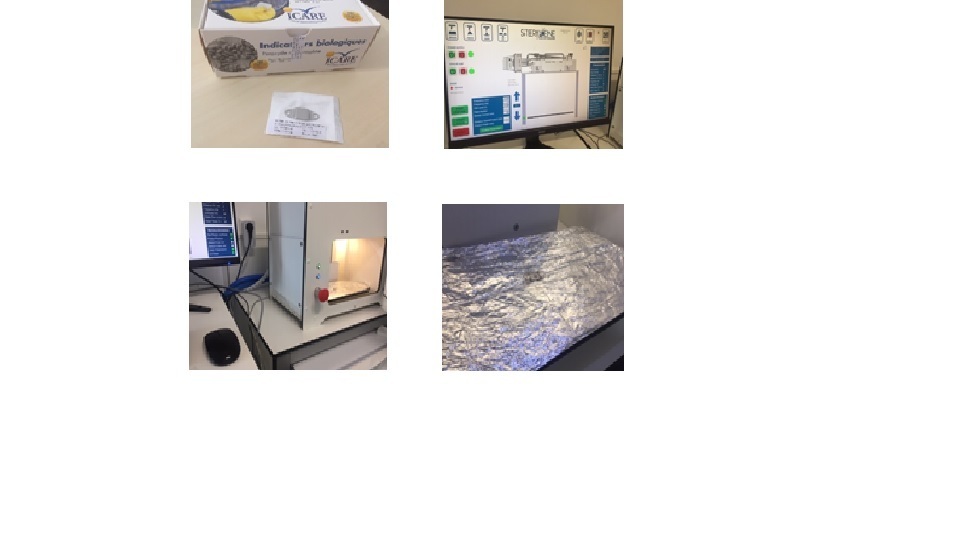/reboot/media/e2ff1b32-8f47-11e8-b37b-fa163e14ea56/5feb1c7e-3d0f-11ea-8e33-0242ac130005/0-0-fluence-vs-decontamination.jpg)
Pulsed light sterilization: logs reduction vs total fluence?
Introduction
The fluence of a flash in J/cm² depends on several factors:
- The distance between the lamp and the object to decontaminate
- The voltage applied to the lamp
- The numbers of flashes
In the literature, it is not rare to find results with 50, 100 or 500 flashes! For example: MacGregors’ and al.[1] in 1998 with 512 Flashes applied to sterilize the Escherichia coli germ. On the same germ, it exists the Rowans’ article and al.[2] in 1999 with 200 flashes applied or even more, the Gomez‑Lopezs’ article and al.[3] in 2005 with 50 flashes applied. (See the article https://en.sterixene.com/news/log-reduction-database-pulsed-light-sterilization )
Which is the interest to multiply the number of flashes?
Does multiplying the number of flashes increase the sterilization level?
Is the pulsed light technology additive?
Is it better to use one high voltage flash or several small intensity flashes?
Material and method
For these tests, we have used the bioindicators witches are usually dedicated to the H2O2 technology containing 1,7e6 ufc/coupons of Geobacillus stearothermophilus ATCC 7953 spores. This study has been realized as part of an R&D activity for the medical field.
Attention : These bio‑indicators H2O2 are not adapted to demonstrate the effectiveness of the pulsed light system because they require an overexposure of the product. The efficiency of the system would then be distorted. The pulsed light technology imposes bio‑indicators realized with the germs in monolayers, maintained in sterile water (see the article about the effect of salt https://en.sterixene.com/news/pulsed-light-disinfection-why-do-we-have-to-keep-the-germs-in-sterile-water ) For every demand for specifier Bio‑indicators please contact us on the following e‑mail address: contact@sterixene.com

The coupons were processed with the STERIXENE XS150 driver.
The bioindicators were placed at 3mm or 30mm from the lamp to have respectively by 2.5 flash or 1.4J/cm². The tests were repeated 3 times.
Several treatments have been applied to obtain approximately the same total fluence.
|
Total fluence J/cm² |
7,95 |
12,55 |
17,85 |
25,10 |
|
Numbers of flashes at 2,5 J/cm² |
3 |
5 |
7 |
10 |
|
Numbers of flashes at 1,4 J/cm² |
6 |
9 |
13 |
18 |
The samples were counted according to the NF V08‑602 standard.
Results
|
Total fluence J/cm² |
7,95 |
12,55 |
17,85 |
25,10 |
|
|
Log reduction
Geobacillus stearothermophilus ATCC 7953 |
Flash at 2,5J/cm² |
4,1 |
6,4 |
6,4 |
6,4 |
|
Flash at 1,4J/cm² |
2,7 |
3,6 |
4,8 |
5,9 |
|

For a total fluence of 7.95J/cm², the difference of the total destruction potential between the 2 flash fluences is 1.4 logs.
At 12.55 J/cm² the difference is at least 2.8 logs!
Not only the 2.5 J/cm² treatment by flash is faster but it is also more effective.
With a 2.5 J/cm² flash fluence, sterility is obtained after 5 Flashes.
In order to obtain the same result, it is necessary to apply 18 flashes of 1.4 J/cm² !
Conclusion
The presented results show that with equal fluence, the sterilization level can be totally different, if this total fluence was carried out using very or not very intense flashes.
The presented results show that more intense is the flash, the disinfection effect is more effective.
The total fluence cannot be corelated with the potential destruction without the exact fluence of each flash.
To get immediately high sterilizations level’s, it is better to use one high voltage flash than several low voltage flashes.
[1] MacGregor et al. 1999, Light inactivation of food‑related pathogenic bacteria using a pulsed power source
[2] Rowan et al 1998, Pulsed‑Light Inactivation of Food‑Related Microorganisms
[3] Gomez‑Lopez et al. 2005, Intense light pulses decontamination of minimally processed vegetables and their shelf‑life
:strip_exif()/reboot/media/e2ff1b32-8f47-11e8-b37b-fa163e14ea56/c670c6e8-2d4b-11ef-a101-0242ac120012/1-1-logo-sterixene-pulsed-light-et-uv-led-decontamination-par-lumiere-pulsee-desinfection-sterilisation.png)
:strip_exif()/reboot/media/e2ff1b32-8f47-11e8-b37b-fa163e14ea56/c670c6e8-2d4b-11ef-a101-0242ac120012/1-1-logo-sterixene-pulsed-light-et-uv-led-decontamination-par-lumiere-pulsee-desinfection-sterilisation.png)
:recolor():strip_exif()/reboot/media/e2ff1b32-8f47-11e8-b37b-fa163e14ea56/a187805a-1807-11ea-a688-0242ac130003/0-0-microbiological-tests.jpg)
:recolor():strip_exif()/reboot/media/e2ff1b32-8f47-11e8-b37b-fa163e14ea56/4415dfee-4f38-11ea-90ac-0242ac130005/0-0-interieur-machine-3.jpg)
:recolor():strip_exif()/reboot/media/e2ff1b32-8f47-11e8-b37b-fa163e14ea56/79a440d2-1807-11ea-b135-0242ac130003/0-0-biological-indicators.jpg)